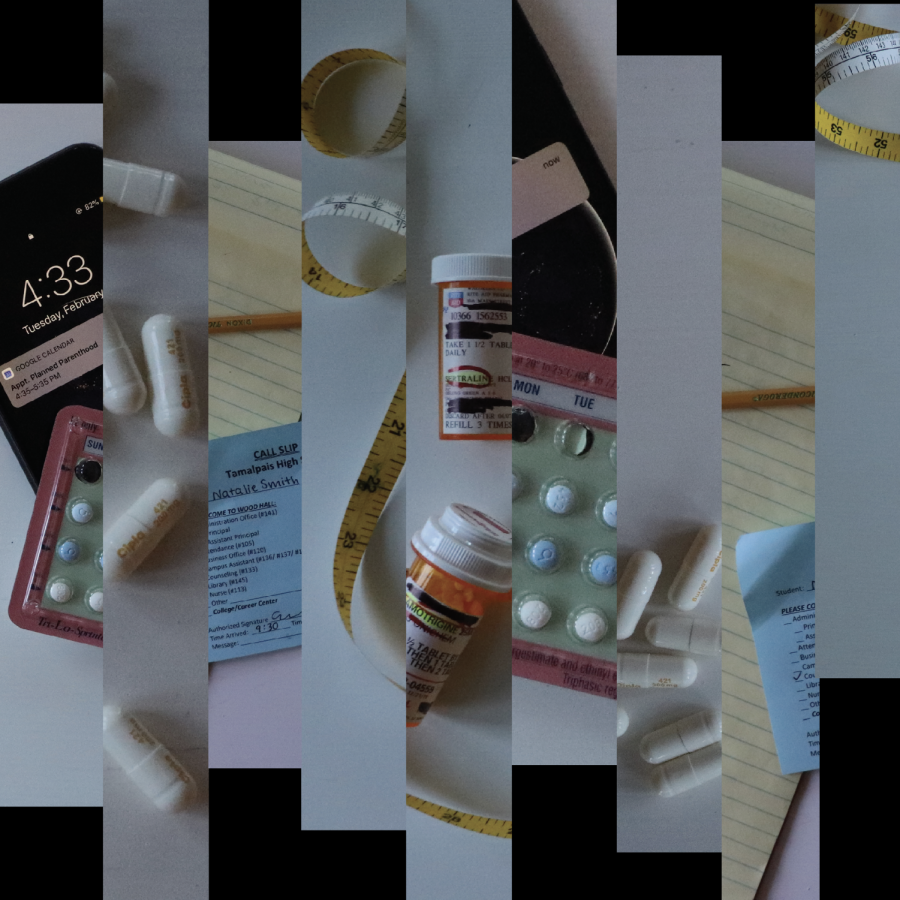Here For You
Additional reporting by Niulan Wright
Trigger Warning: This story explores mental health topics including self-harm, depression, substance abuse, and eating disorders, which could be traumatic for some readers.
An anonymous Tam student, Drew, has been suffering from depression for four years. Drew said that, until recently, on his best days he felt isolated. On his worst, he felt completely hopeless of ever feeling normal again. He was unaware of anyone who wouldn’t judge him or ask excessive questions, or who could relate to his experience. Drew didn’t think finding help was possible, and he kept his feelings to himself. However, Drew now participates in a teen support group at Kaiser Permanente, which he said has helped him to gain perspective and feel less alone. He is on the road to recovery and is grateful he was able to find help.
Like Drew, many Tam students struggle with mental health—along with other issues such as substance abuse, eating disorders, self-injury, depression, and pregnancy—issues that can be incredibly serious and far too often go unaddressed by professionals.
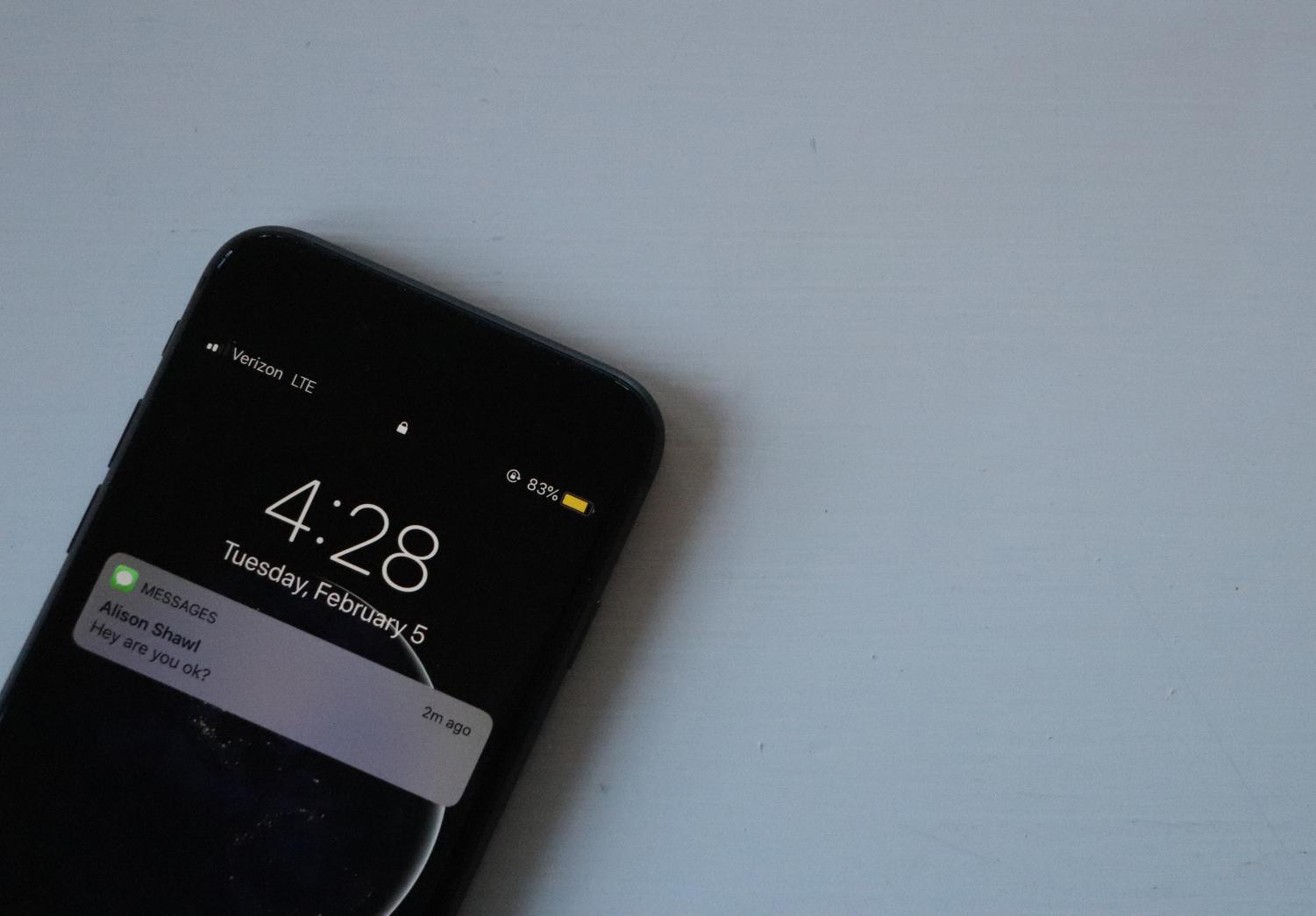
Fortunately, there are resources available at Tam, in our community, and nationally to assist students who are struggling with such challenges. According to the 2018 Healthy Kids Survey, only 47 percent of 9th graders and 49 percent 11th graders stated it was “very much true” that they knew where to go to for help if they had a problem. Increasing awareness of the resources available give the students who need and want to seek help the option to do so. Starting at the most basic level, students can access help through their school counselors. As counselor Jane Zimmerman states: “We’re not therapists, but we do understand that mental health can impact academics.”
Students may seek support from a counselor at Tam by their own initiative or by a referral from concerned parents or friends. In addition, if a student wishes to utilize a resource other than their counselor, other adults at Tam are available to provide assistance to students in need.
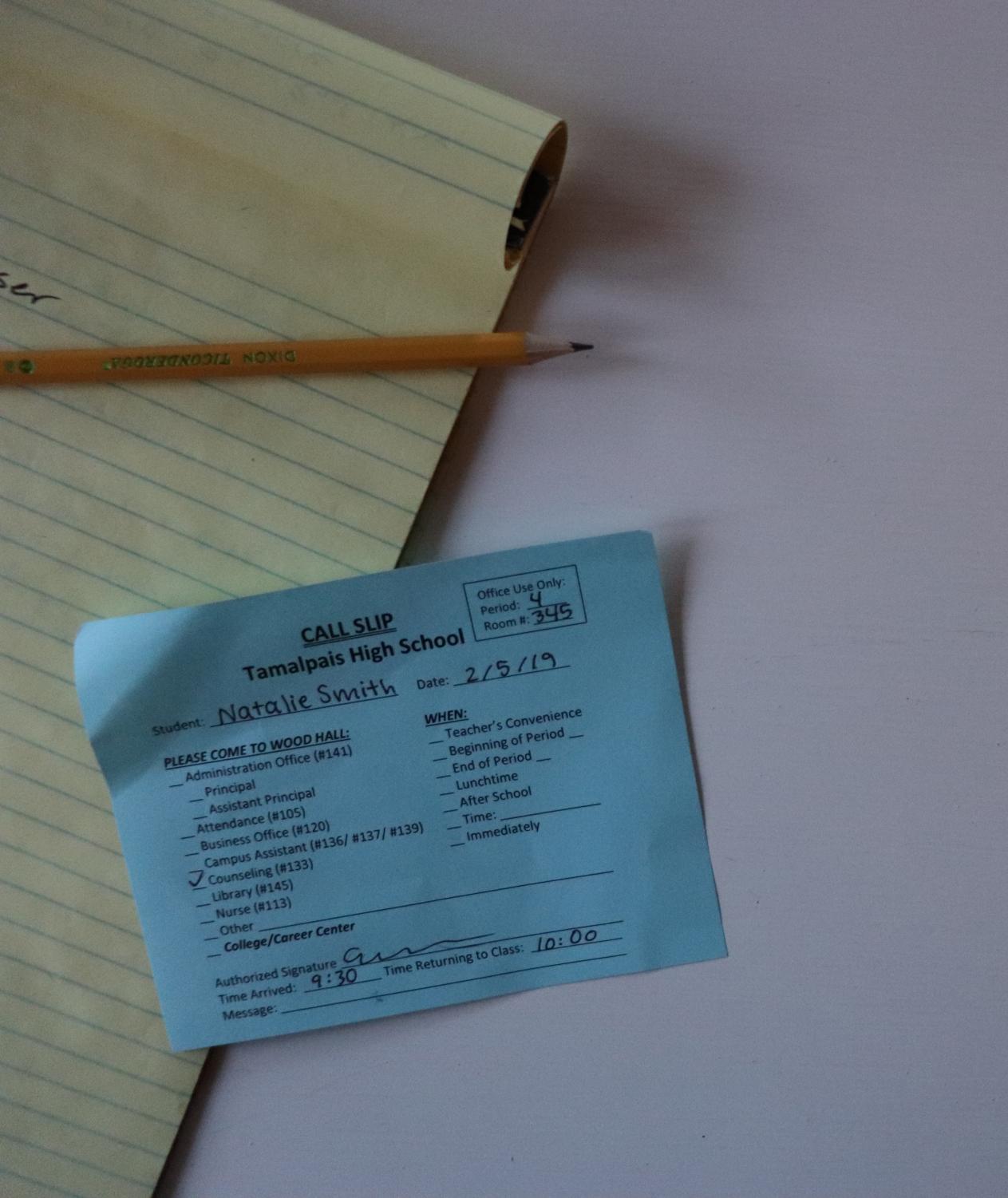
Bay Area Community Resources (BACR) therapists on campus help to broaden the network that students may connect with in times of need. BACR counselor Tessa Mariano-Brofferio often connects with students through adults at Tam, who are not necessarily mental health professionals. “School counselors [will refer students] and that’s a little bit influenced by teachers. So some school staff is noticing a shift in someone’s behavior or the way someone is presenting,” Mariano-Brofferio said. “Usually they’ll check in with the student and say, ‘Hey we offer these services; would you be interested in me introducing you to one of the therapists or counselors on campus?’” Students in crisis can also refer themselves to BACR, by either contacting their school counselor or Wellness Coordinators.
According to Mariano-Brofferio, the student response to BACR counseling is generally positive. However, some individuals may not be ready to open up, whether it be for personal reasons or because of the setting presented. “It is pretty vulnerable to get real in school, and as nice as it is to have a safe space where you can [unload], you also have to [unload], and then pack things back up pretty quickly to go back to class after that session’s over,” Mariano-Brofferio said.
Counseling and Wellness staff are equipped to refer students to off-campus support if needed. “Obviously, school-based support is kind of limited, you know, if you’ve got a test or some obligation that keeps you from coming down,” Mariano-Brofferio said. “If somebody’s coming in with something that feels beyond what could be explored with at a school-based setting it’s definitely necessary to see what kind of resources we can connect them to outside.”
Student experiences expressed to adults in the Counseling and Wellness Program are kept confidential, with a few exceptions. “The only boundaries are around safety issues,” Mariano-Brofferio said. “So if someone were sharing with me they were hurting themself, or someone else, or they were under the influence in the moment, it would be necessary for me to get other people involved to keep them safe.”
Common student problems that Mariano-Brofferio observes in BACR therapy often involve anxiety and depression. “I’d also say something that has been a continued theme is feeling this pull of opposites,” she said. “You know like, ‘I want to stay motivated and make my parents proud,’ and at the same time it’s a lot of influence that self-sabotages, like drug and alcohol use, and pressure to fit in.”
If you or someone you know if going through crisis or emotional distress, the Tam Counseling and Wellness Program is available for support.
Counselors Offices: Rooms 129-132
The Wellness Center: Room 128
BACR Counselor Offices: Rooms 121, 135, 137
Artificial Happiness
Substance Abuse

An anonymous junior, who will be referred to as Nick, began smoking marijuana his freshman year. By his sophomore year, he found himself dependent on the drug. “I was smoking because I needed to be high,” Nick said.
Eventually, Nick’s parents became aware of his frequent substance use and threatened a rehabilitation intervention. Nick initially did not take this threat seriously, but everything shifted on a family vacation. “I was in Hawaii with my family and I got detained by the police, and my family was just like, ‘You can’t be here, you’re not stable,’ he said. “Then they just sent me home, and then I popped a shit ton of my mom’s Xanax.”
Nick’s parents enrolled him in a rehabilitation center, where he remained for twenty-one days. Upon return, Nick began attending Alcoholics Anonymous (A.A.) meetings. Nick’s drug use grew more dangerous over time, even though he appreciated A.A. “The entire time I was using, I was going to A.A.,” he said. “I just liked the stories they would tell and it was sort of fascinating … I just wanted to get motivated enough to stop but it just never really happened.”
In the few months after rehab, Nick’s substance use got more serious. “I sort of just made it into like a joke, and that’s something I’ve noticed a lot in some drug communities. They’re all sort of looking to die, whether it’s consciously or subconsciously, they all know they’re killing themselves in the back of their minds,” he said. “I have a lot of friends that talk about super horrible things, but they’ll do it in a manner that’s just comedic and makes you laugh, but if you take a step back and really think about it, it makes you really sad.”
By the beginning of his junior year, Nick’s substance abuse, particularly of cocaine and Xanax, was impacting his life to a more serious extent and he made the decision to quit his use. “I was on the comedown off of hella coke,” he said. “I told my [friend] that I just don’t want to do this anymore.”
Now, in recovery, Nick can explore differences between his two lives. “My mind is just not the same. Even when I just stopped using drugs, colors started becoming brighter,” he said. “I thought that drugs were helping [my mental health] because they’re like temporary, artificial happiness, and they just did not. You realize that later, after you stop.”
Nick currently continues to attend weekly A.A. meetings. “Honestly A.A., even with the stupid motivational shit they say, if you really think about it, and use it and apply it to your life, it’s actually really helpful,” he said.
According to the Addiction Center website, some of the ways to recognize addiction are:
- Unable to meet responsibilities due to consumption
- Spend a lot of time thinking about or using the substance
- Loss of interest in activities once enjoyed
- Withdrawal
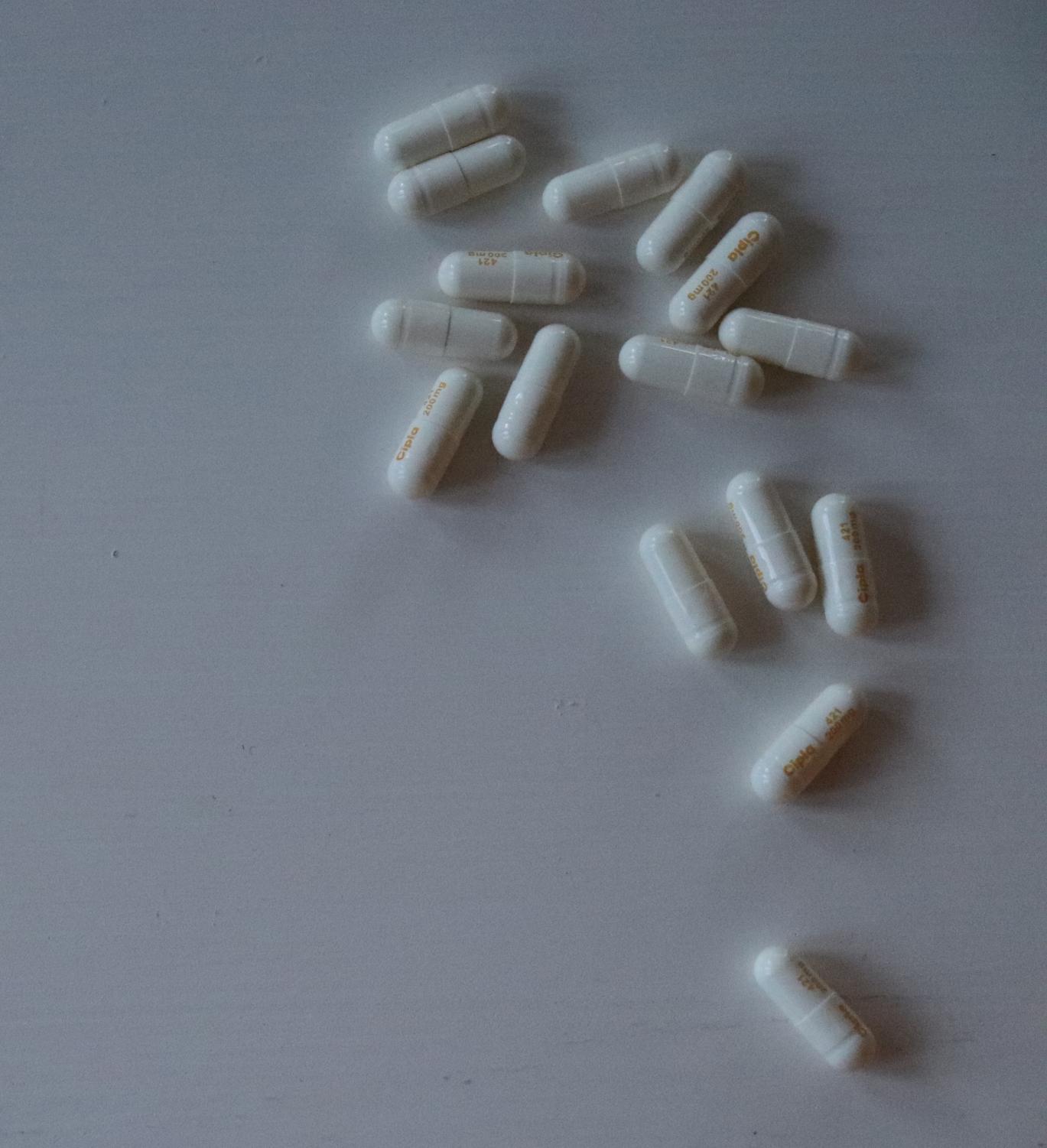
Substance Abuse Resources
Tam:
- Huckleberry Youth Program: Offer weekly individual and group counseling to students whose substance use is impacting their social, family, or academic lives. This program also offers sessions with parents to discuss additional treatment options for the students.
- BACR substance use/abuse counseling: A student can voluntarily receive individual substance use and abuse therapy from a BACR therapist.
To begin counseling or get more information on any of the above options, visit your school counselor or the Wellness Center.
Local:
- The nearest AA center is in San Francisco. Offers closed and open meetings for both alcoholics and nonalcoholics. Members explore how they can live a satisfying life without alcohol. For more information, visit www.aa.org.
- Bay Area Community Resources (171 Carlos Dr, San Rafael): Provides and refers teens to drug and alcohol programs which address various aspects of addiction.
Empty
Eating Disorder

An anonymous junior, who will be referred to as Riley, has struggled with her body image from a young age. She was six years old when she was diagnosed with pediatric bipolar disorder, and her medication for her condition affected her metabolism. “Taking medication … it causes you do gain a lot of weight, and I guess I was pretty insecure from a young age about [it].” By her freshman year, she had developed the beginning signs of an eating disorder, anorexia nervosa.
As a result of social tensions and increased academic rigor going into sophomore year, Riley turned to food restriction. “[I fell out of touch with] two of my closest friends and I just kind of felt abandoned,” Riley said. “It’s also hard because I felt pretty anxious with the load of schoolwork, too, and when you’re restricting [food] you’re really not thinking about anything else, and so it kind of like helps to numb everything out.” In Riley’s case, she began limiting, or restricting, the amount of food she consumed in an effort to lose body weight.
In hindsight, Riley recognizes how little she had been consuming, but that was not the case while she was experiencing anorexia. “I think I convinced myself that I was eating a lot more than I was eating, and I felt really bad after eating.” As Riley’s physical health declined, her disorder worsened and her restriction became a way of escape and control. “When you’re not eating so much you’re kind of out of it, so it can kind of feel like a high. When you just feel sort of empty, you can’t really focus on anything negative.”
Riley did her best to keep her struggle internal, but it soon became difficult to hide. “Some people were noticing changes, and like, noticing that I didn’t have much energy … I got pretty pale… My parents really started noticing that I stopped eating and I was just constantly dizzy and cold. A lot of times in the morning I would get these super bad calf cramps that would scare me awake, and I would start screaming in pain, and my parents would have to come in and like massage my calves out because they would be so tight. So my parents were just really noticing that something was up.”
Riley’s parents took her to UCSF, where she became a part of an outpatient treatment program, which involved frequent check-ins with her doctor, as well as a meal group and support group. “It’s kind of hard transitioning back and forth, especially when I was allowed to come back to school for lunch, with people kind of interfering with my recovery,” Riley said. She recalled some peers saying, ‘Where have you been?’, ‘Why are you eating so much all of the sudden?’, and ‘Why did your parents have to pack your lunch?”
Riley has since recovered from anorexia, but her path was not easy. “I feel like every single time in my recovery I would hit a certain point, and I would be like ‘I’m done here, this isn’t getting better, I feel so bad about myself…. [but] recovery is so worth it. It is just so much better and you can never know until you are there. If you are recovering, keep going, it’s definitely better… accept where you are now and also strive to be better, and don’t try to create this better version of yourself by beating yourself up. Your thinking is so warped when you’re restricting. You can’t think properly if you haven’t eaten.”
Eating Disorders Resources
Local:
- The UCSF Eating Disorders Program provides young people with medical care, nutrition therapy, and additional psychological services. The Outpatient program addresses eating disorder issues in various types of therapeutic sessions over 6-9 months. For more information on this program, visit www.eatingdisorders.ucsf.edu/outpatient.
Escape
Self Harm

An anonymous junior, who will be referred to as Ericka, has struggled with family and self-esteem issues her whole life. “My mom died when I was five, which probably had something to do with it,” Ericka said. As Ericka grew older, she began to take her anguish out through self-harm. “Everything that built up just resulted in me taking it out on myself, along with most of it that was just like, hating myself in general… It was the easiest way to escape that pain for a second, or take it out on something.”
Some friends, Ericka said, might have noticed her distress and checked in, but for the most part, she hid her scars, mentally and physically. “I didn’t want to be a problem to [my family]. I’d never, ever asked my dad for anything, really,” she said. “My brother found out once… he freaked out and told my uncle, and that’s when I started going to therapy, which helped, but like, not all the way I guess.”
Ericka recalled one particularly difficult day, after she had texted her dad that she didn’t feel well and couldn’t go to school. “He came downstairs and I had fallen asleep, and there was blood like, everywhere,” she said. “He sees my arm and actually like, yelled at me. Of course, like a fucking asshole. And it was really fucking horrible. And then I went to school and he texted me and was like, ‘I’m sorry,’… He still didn’t care after that. It really sucked, like it was probably one of the worst days of my year. It definitely hurt really bad, just to see that.”
Ericka found therapy helpful in the long run, even if it may not have resolved her issues right away. “Being able to say everything about my whole life that I had never been able to express to anyone … Just to say it out loud, it helped me stand back and take a look at it and that definitely helped tremendously.” Ericka also found that distracting herself helped with her anger and sadness. “Going out with friends, watching a movie. I would try really hard. It just depends on where you’re at, but definitely going out and filling your time with other things, because it really just came out when I was alone with my thoughts.”
However, Ericka found the greatest way to recovery was through her own growth. “I really just needed to figure it out for myself honestly. Because I did, and it helped so much.”
Ericka can now look back on her experience and what she learned. “It was not good and it was a really bad time, but it definitely taught me a lot and it helped me grow,” she said. “There is a way to get out of it. Just, it takes time. Work on yourself.”
Breaking Point
Depression
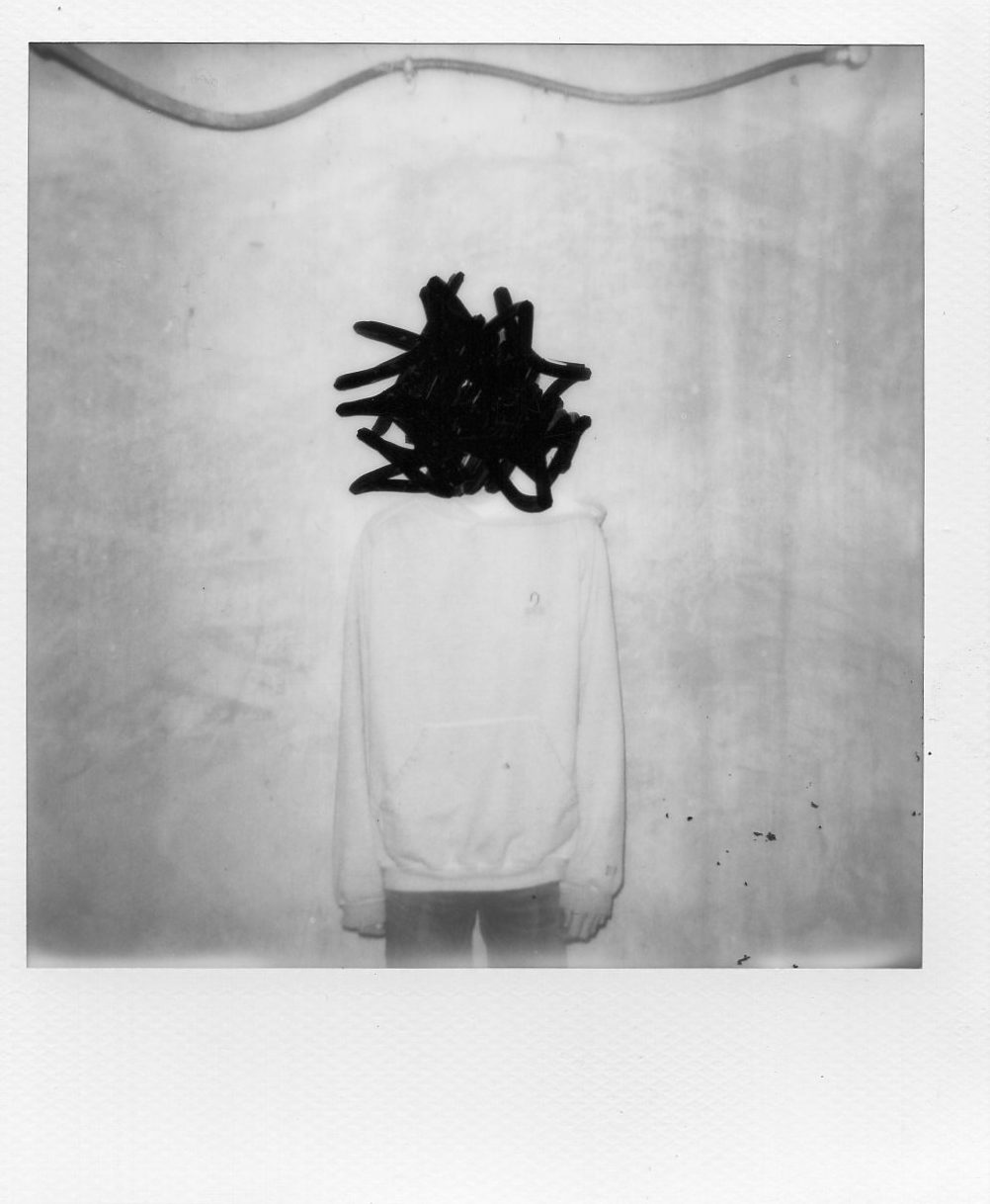
An anonymous freshman, who will be referred to as Drew, was in fourth grade when his first symptoms of depression began to solidify. “It started when someone really close to me died. It kind of [became] a lot worse when that happened, but before I was always just a loner. I feel like, my whole life,” he said. Through middle school, Drew’s internal struggle grew, but others were largely in the dark about his state. “I would just try to hide it for a while. I would hide it from everybody, just keeping inside and not let anybody else know about it, and it made me a lot worse. I do regret that.”
During this time, Drew’s experience at school suffered. “I’ve been bullied a lot for [having depression]. It’s caused a lot more stress to me, from getting into fights and being looked at as someone I don’t want to be,” he said. “I feel like it’s affected how other people look at me, even people who don’t know me, but have heard of me.”
Drew felt it necessary to hide his pain from others. “[My parents] were somewhat aware of what was going on but not that it was as serious as it was. They saw glimpses of it … but they didn’t really notice how much it impacted me.”
Earlier this year, Drew got to a breaking point. “Something happened, I ended up in the hospital,” he said. “It wasn’t necessarily my choice [to get help].” At the time, Drew opposed the initiative to help him and felt overwhelmed, but he has since become more open about utilizing his resources, which mainly include group sessions and therapy. “I just started this year with trying to fix [my problems], accept them as part of me, and try to solve them.”
Now, Drew attends both individual and group therapy sessions, and he appreciates the camaraderie and support that group sessions help with. “Whenever I’m talking to someone who doesn’t really know much about [depression], they ask a ton of questions and it sometimes, in the moment especially, makes it worse. So it’s nice to have people just understand,” Drew said. “With the group, I feel like I can talk freely and I won’t be judged, and people won’t take it the wrong way.”
As Drew is continuing to receive help, he can reflect on his experience prior to receiving support. “When it was happening a lot worse, I felt like there was no way to get help. I just felt like I was alone and I felt like nobody else knew what I was going through…I didn’t have to keep it all to myself, because there was other people that would understand what I was going through.”
Depression and Self-Injury Resources
Local:
- Marin Crisis Stabilization Unit (250 Bon Air Rd, Greenbrae): assessments, referrals and consultation to individuals in a mental crisis, usually a danger to themselves or to others.
Hotlines:
- Crisis Text Line: Text BAY to 74174
- S.A.F.E. (Self Abuse Finally Ends) Alternatives (1-800-DONT-CUT): Informational line on services the program offers, which includes therapy and support groups for individuals that self harm
- California Youth Crisis Line (1-800-843-5200): Offers counseling, information, and referrals for ages 12-24.
Morning Sickness
Pregnancy
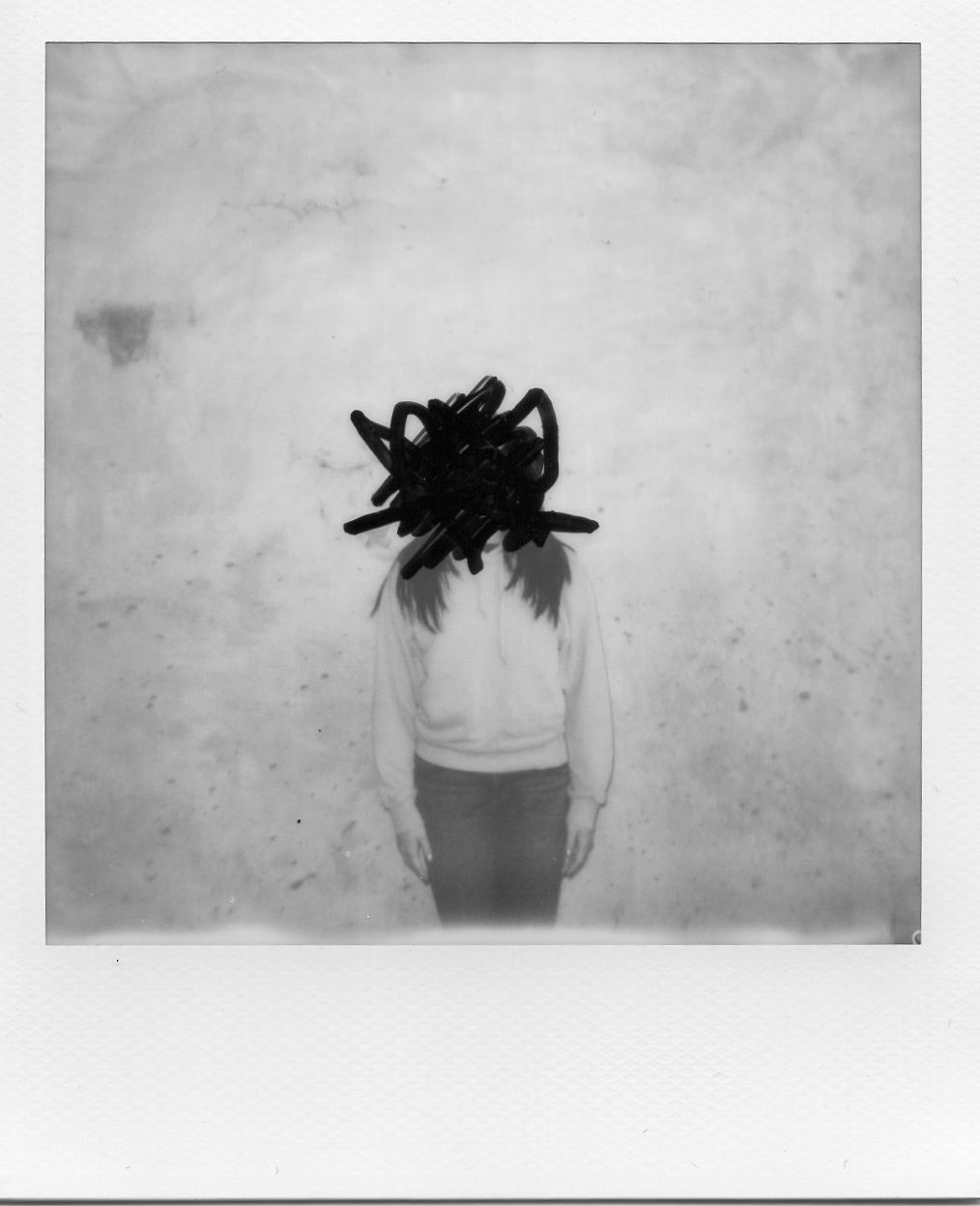
An anonymous junior, who will be referred to as Mia, was “already going through stuff,” when she started displaying signs of pregnancy. “[My boyfriend] and I had just broken up… I didn’t really see it coming because I honestly just thought [my nausea] was just from letting go of him. Like, ‘Oh, I’m probably just feeling nauseous because I miss him so much.’” Her immediate response to finding out about her pregnancy was disbelief and panic. “[My parents] are really strict … So it was just me, scared, nervous[and] worried because I didn’t know what to do at that moment. I didn’t know what to do without my parents finding out.”
Mia decided to confide in a close friend, who informed her of some options. “[My friend] goes to Planned Parenthood, so she’s the one that basically got me access there … If I [didn’t] know her, I honestly think that I probably would have had that baby,” she said. “[Planned Parenthood staff] are really nice. Usually, you can tell when people are judgemental, like, ‘Oh, you’re fifteen?’ They all didn’t seem to care, they were just doing their jobs and it really helped me.” During her visit, Mia decided to take a pill to induce abortion and her appreciation for Planned Parenthood’s services remained afterward.
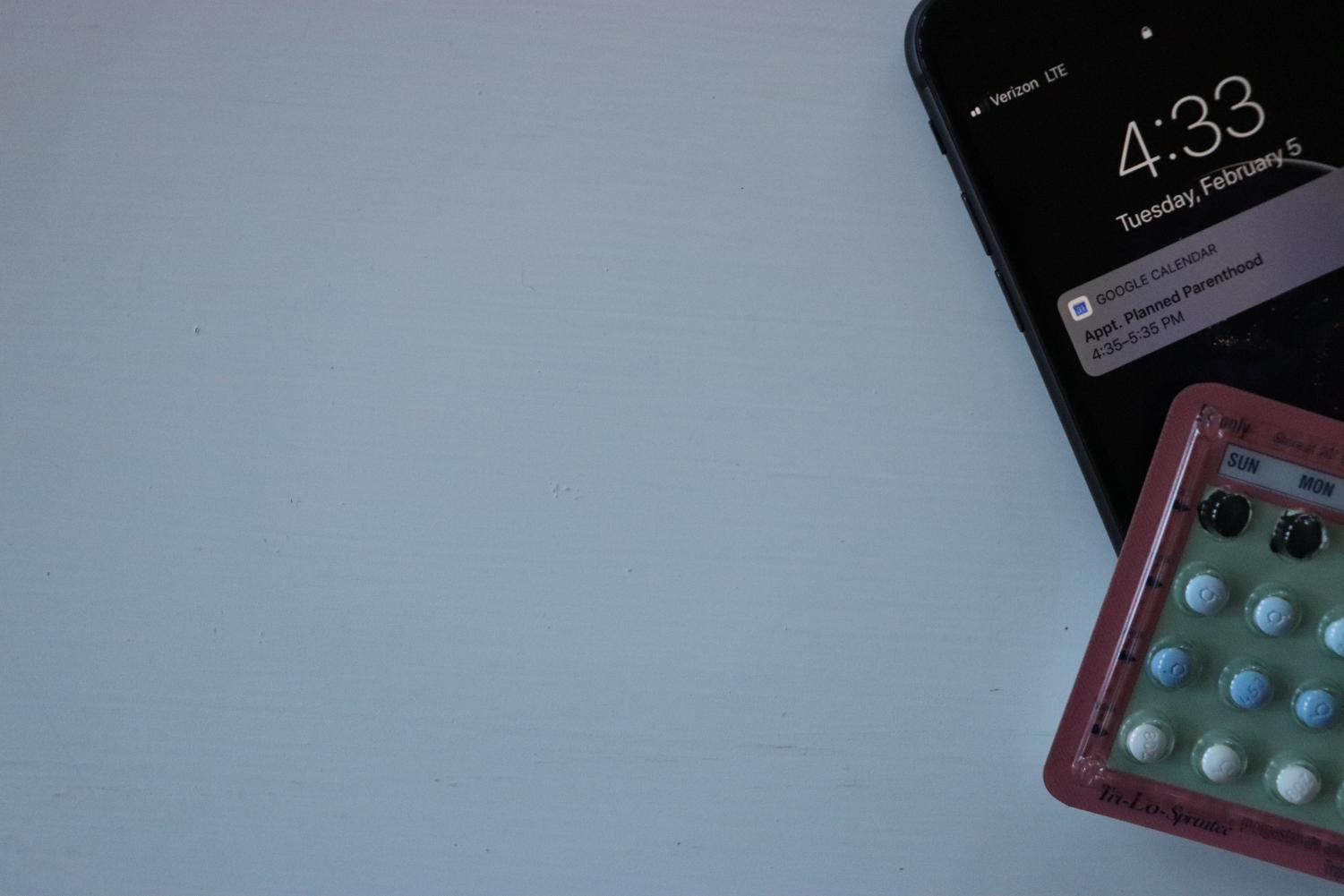
In hindsight, Mia wished she had been more prepared for her situation and had known more about how to prevent it. “I just wish that we had more knowledge about what sort of birth control to use, so that girls kind of felt like, okay, it’s not just a condom that I can use, it’s other stuff, like pills and implants and stuff like that.”
Mia felt the emotional toll of her pregnancy well into the future, despite the psychological relief of her abortion. “When him and [I] got back together again I didn’t want to [have sex] anymore because I was just so traumatized by it … It left me more traumatized than anything, to be honest.”
Pregnancy Resources
Tam:
- Tam’s Sexual Health Clinic (offered every third Friday), provides convenient access to sexual health services, linke pregnancy and STI testing, birth control dispensing, etc.. Make an appointment at the Wellness Center for a confidential meeting with a sexual health provider.
Local:
- Planned Parenthood (2 H St, San Rafael): Walk-in hours on weekdays. Professionals can provide information on pregnancy and sexual health as well as sexual health services. Services at Planned Parenthood include abortion services, birth control dispension, and STD testing and treatment. For more information or to make an appointment, visit www.plannedparenthood.org.
- Huckleberry Youth Health Center (361 3rd St Suite G, San Rafael): Teen Tuesdays with drop in hours. Offers pregnancy testing, Birth control, STI/STD testing, and Health education.

Helping a Loved One
If you are concerned for a friend about their state of mental health, it might be difficult to know how to best support them. According to Mariano-Brofferio, the best thing to do may be just listening to their point of view. “There’s still a lot of stigma around mental health, seeking support, and some people not really giving themselves permission to legitimize their emotional experience… Like, ‘Other people have it worse than me so I don’t want to take up time,’” she said. “Just being willing to let them know like, ‘Hey, I hear that you’re having a hard time and I’m here for you.’”
According to Mariano-Brofferio, therapy is a strong option for individuals looking for a confidential, open space. “Unlike a lot of other relationships we can get honest with our experience,” she said. “We get to establish a really trusting relationship with students which allows the opportunity to do some self-exploration, and get pretty honest with our emotional experience in a way that we might not be in other situations or relationships.”This
BACR
If you or someone you know is interested in receiving support from a BACR therapist, visit the Wellness Center or your counselor. Beyond therapy, other options are available for students struggling with emotional crisis.
The Wellness center and BACR are essential programs which help hundreds of students at Tam deal with issues like the ones mentioned in this article. However, due to the district’s financial crises their program budget is proposed to be cut in half, leaving a program already at capacity without funding and unable to accommodate all the students who need help. To learn more about BACR, read our news story “BACR Cuts” and our editorial, “District in Decay”.
Photos by Zoe Cowan and Leah Fullerton


